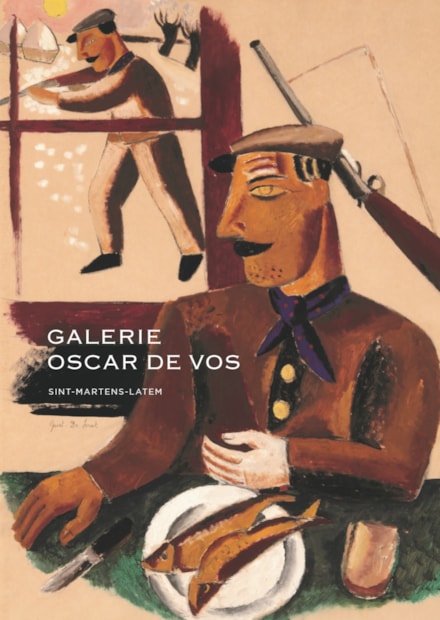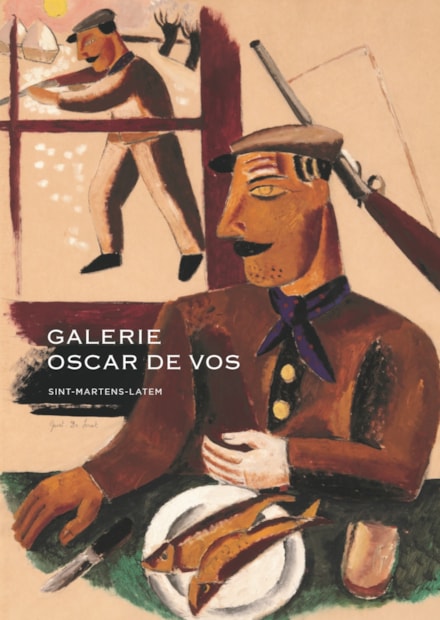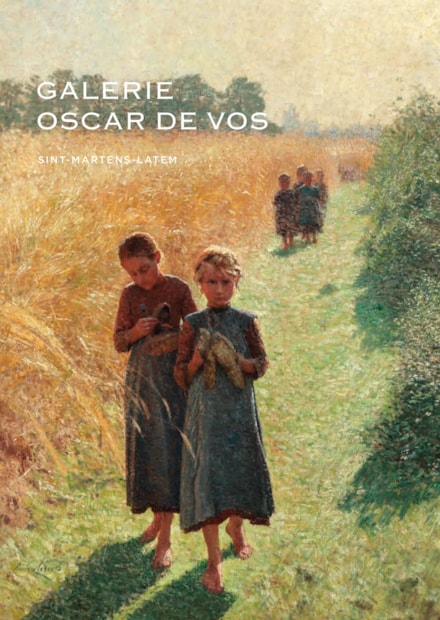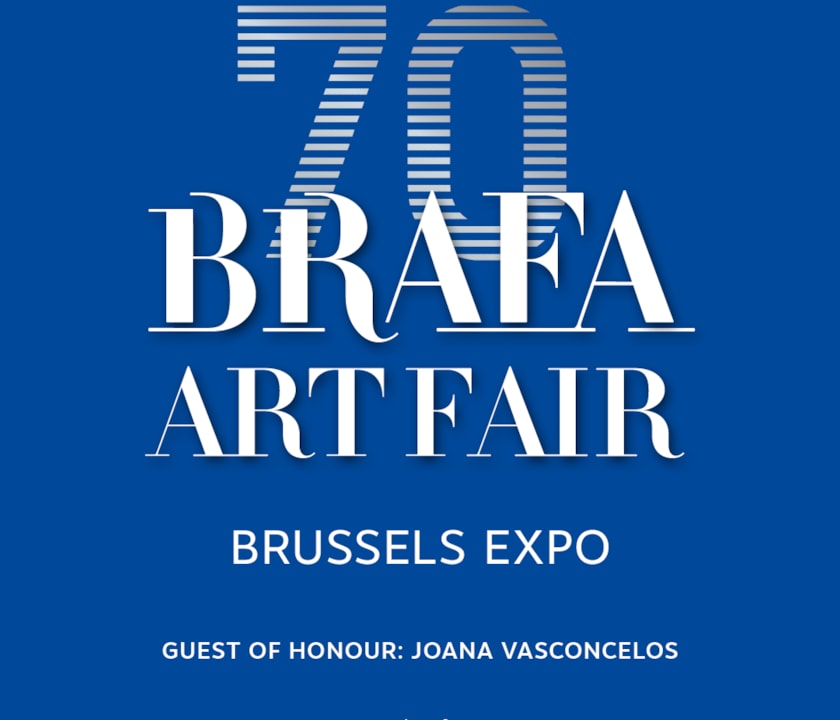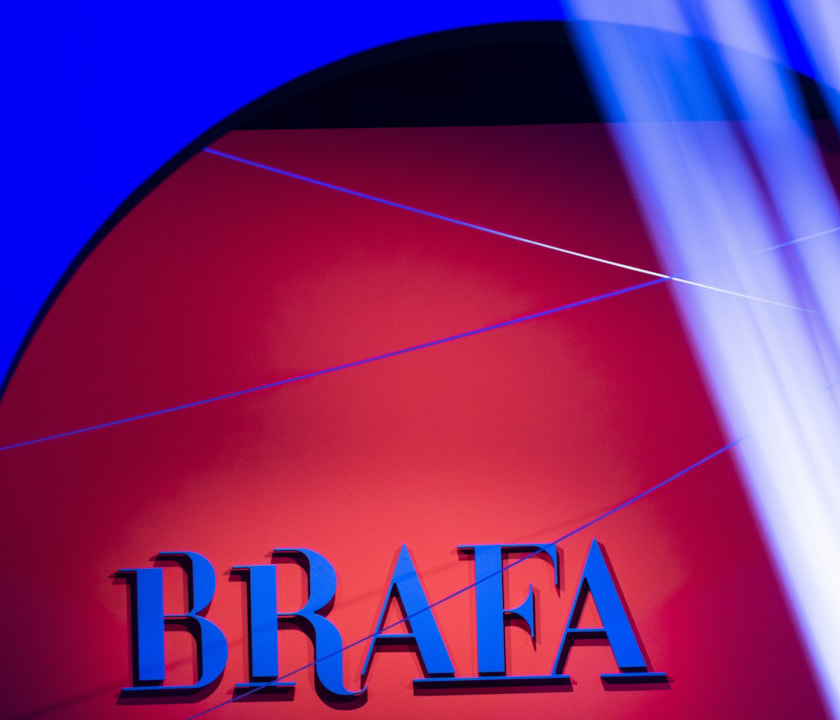Gustave Van de Woestyne
(1881 - 1947)
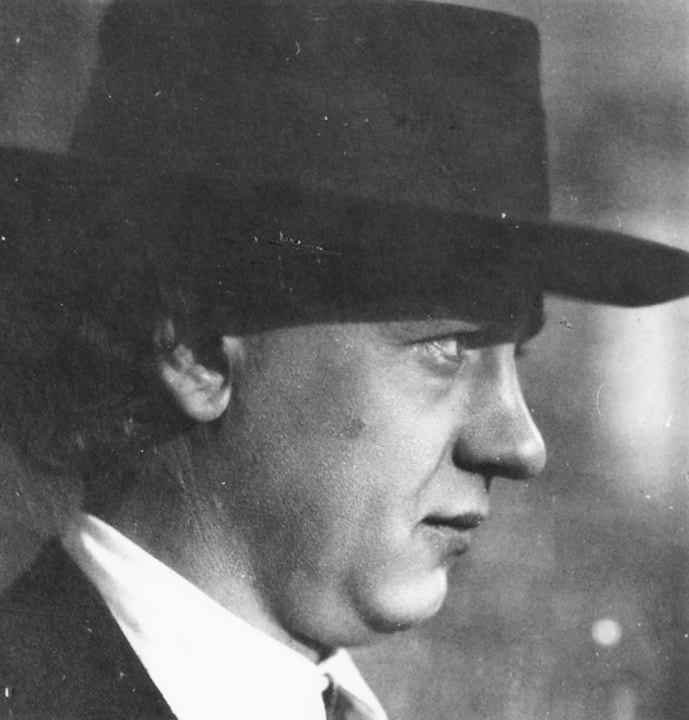
Gustave Van de Woestyne
(1881 - 1947)
Dans sa jeunesse, Gustave Van de Woestyne étudie à l’Académie des Beaux-Arts de Gand. Son frère n’est autre que le peintre Karel, qui l’introduit dans le milieu artistique et intellectuel gantois auquel il a accès. Au côté de son frère, Van de Woestyne acquiert une formation intellectuelle qui, dès son plus jeune âge, le fait pénétrer dans l’univers de la littérature, de la musique classique et des arts plastiques.
Lorsque Van de Woestyne s’installe en 1900, en compagnie de son frère, à Laethem-Saint-Martin, il a à peine 19 ans. L’étudiant d’académie inexpérimenté est confronté à l’intellectualisme raffiné de George Minne qui forme, avec Valerius De Saedeleer et Jules De Praetere, le noyau de ce que l’on a appelé la première École de Laethem, caractérisée par ses aspirations symboliques.
Jeune artiste, Van de Woestyne est assez vite remarqué, et dans les années précédant la Première Guerre Mondiale, il peut participer à d’importantes expositions à Amsterdam, La Haye et Venise. Il est aussi accueilli par le groupe d’avant-garde bruxellois “La Libre Esthétique”.
Van de Woestyne demeure à Laethem jusqu’en 1909. À ce moment, ce que l’on a appelé le premier groupe symboliste se dénoue. Par nostalgie pour les années à Laethem, il suit Valerius De Saedeleer à Tiegem, où il vit jusqu’en 1913. Tout près, à Ingooigem, réside un autre ami, l’écrivain Stijn Streuvels, pour qui il illustre en 1909 la traduction de l’épopée animale médiévale “Le Roman de Renart”. En 1913, il se rend à Florence avec Valerius De Saedeleer.
Dès le début de la guerre, il prend la fuite avec la famille De Saedeleer et via Sint-Anna-ter-Muiden, Ostende et Londres, il échoue finalement au pays de Galles. Dans un premier temps, il habite la petite localité côtière d’Aberystwyth. Ensuite, il s’installe à Llansiloes, le village où Georges Minne vit également son exil. Le pays de Galles ne lui convenant décidément pas, il se rend régulièrement à Londres en 1915 et 1916. Finalement, il déménage dans la capitale britannique en 1917. Ces connexions londoniennes lui assurent une relative aisance. Ce sont surtout ses relations avec le couple de Hollandais Jacob De Graaff-Bachiene et son épouse, qui sont d’une importance déterminante. Ces relations amicales et le succès rencontré en Grande-Bretagne le font même hésiter à la fin de la guerre à retourner en Belgique.
Revenu en Belgique, il passe quelques années à la Rozenhuis à Waregem. Modest Huys avait également auparavant séjourné dans cette maison de la famille De Sutter. Après Van de Woestyne, Jules De Sutter y trouvera également un point de chute. À partir de 1925, il demeure à Malines, où il a été nommé directeur de l’Académie des Beaux-Arts. La même année, il devient professeur de peinture à l’Institut Supérieur National des Beaux-Arts d’Anvers et à l’École Supérieure des Arts Décoratifs de la Cambre à Bruxelles.
Ces postes officiels n’empêchent cependant pas Van de Woestyne de continuer à faire partie de l’avant-garde. Ainsi, il est l’hôte en 1925 de la galerie bruxelloise moderniste “Le Centaure”. En 1929, il est l’hôte en solo du Palais des Beaux-Arts de Bruxelles qui vient d’être inauguré. En 1926, il fait aussi partie du cercle artistique “Les 9” qui regroupe également, entre autres, Gustave De Smet et Frits Van den Berghe. Avec eux, il devient dix ans plus tard membre du célèbre cercle “Les Compagnons de l’Art”. Sur le plan international, il est aussi considéré comme d’avant-garde. Ainsi, en 1926, il est l’un des participants phares de l’exposition “L’Art Belge à Grenoble”. Par ailleurs, Van de Woestyne profite dès 1928 du mécénat du couple bruxellois David et Alice van Buuren. Leur collection visionnaire compte aujourd’hui le plus grand ensemble privé d’œuvres de Van de Woestyne, à découvrir au Musée van Buuren à Uccle.
Lorsque Van de Woestyne s’installe en 1900, en compagnie de son frère, à Laethem-Saint-Martin, il a à peine 19 ans. L’étudiant d’académie inexpérimenté est confronté à l’intellectualisme raffiné de George Minne qui forme, avec Valerius De Saedeleer et Jules De Praetere, le noyau de ce que l’on a appelé la première École de Laethem, caractérisée par ses aspirations symboliques.
Jeune artiste, Van de Woestyne est assez vite remarqué, et dans les années précédant la Première Guerre Mondiale, il peut participer à d’importantes expositions à Amsterdam, La Haye et Venise. Il est aussi accueilli par le groupe d’avant-garde bruxellois “La Libre Esthétique”.
Van de Woestyne demeure à Laethem jusqu’en 1909. À ce moment, ce que l’on a appelé le premier groupe symboliste se dénoue. Par nostalgie pour les années à Laethem, il suit Valerius De Saedeleer à Tiegem, où il vit jusqu’en 1913. Tout près, à Ingooigem, réside un autre ami, l’écrivain Stijn Streuvels, pour qui il illustre en 1909 la traduction de l’épopée animale médiévale “Le Roman de Renart”. En 1913, il se rend à Florence avec Valerius De Saedeleer.
Dès le début de la guerre, il prend la fuite avec la famille De Saedeleer et via Sint-Anna-ter-Muiden, Ostende et Londres, il échoue finalement au pays de Galles. Dans un premier temps, il habite la petite localité côtière d’Aberystwyth. Ensuite, il s’installe à Llansiloes, le village où Georges Minne vit également son exil. Le pays de Galles ne lui convenant décidément pas, il se rend régulièrement à Londres en 1915 et 1916. Finalement, il déménage dans la capitale britannique en 1917. Ces connexions londoniennes lui assurent une relative aisance. Ce sont surtout ses relations avec le couple de Hollandais Jacob De Graaff-Bachiene et son épouse, qui sont d’une importance déterminante. Ces relations amicales et le succès rencontré en Grande-Bretagne le font même hésiter à la fin de la guerre à retourner en Belgique.
Revenu en Belgique, il passe quelques années à la Rozenhuis à Waregem. Modest Huys avait également auparavant séjourné dans cette maison de la famille De Sutter. Après Van de Woestyne, Jules De Sutter y trouvera également un point de chute. À partir de 1925, il demeure à Malines, où il a été nommé directeur de l’Académie des Beaux-Arts. La même année, il devient professeur de peinture à l’Institut Supérieur National des Beaux-Arts d’Anvers et à l’École Supérieure des Arts Décoratifs de la Cambre à Bruxelles.
Ces postes officiels n’empêchent cependant pas Van de Woestyne de continuer à faire partie de l’avant-garde. Ainsi, il est l’hôte en 1925 de la galerie bruxelloise moderniste “Le Centaure”. En 1929, il est l’hôte en solo du Palais des Beaux-Arts de Bruxelles qui vient d’être inauguré. En 1926, il fait aussi partie du cercle artistique “Les 9” qui regroupe également, entre autres, Gustave De Smet et Frits Van den Berghe. Avec eux, il devient dix ans plus tard membre du célèbre cercle “Les Compagnons de l’Art”. Sur le plan international, il est aussi considéré comme d’avant-garde. Ainsi, en 1926, il est l’un des participants phares de l’exposition “L’Art Belge à Grenoble”. Par ailleurs, Van de Woestyne profite dès 1928 du mécénat du couple bruxellois David et Alice van Buuren. Leur collection visionnaire compte aujourd’hui le plus grand ensemble privé d’œuvres de Van de Woestyne, à découvrir au Musée van Buuren à Uccle.
publications

